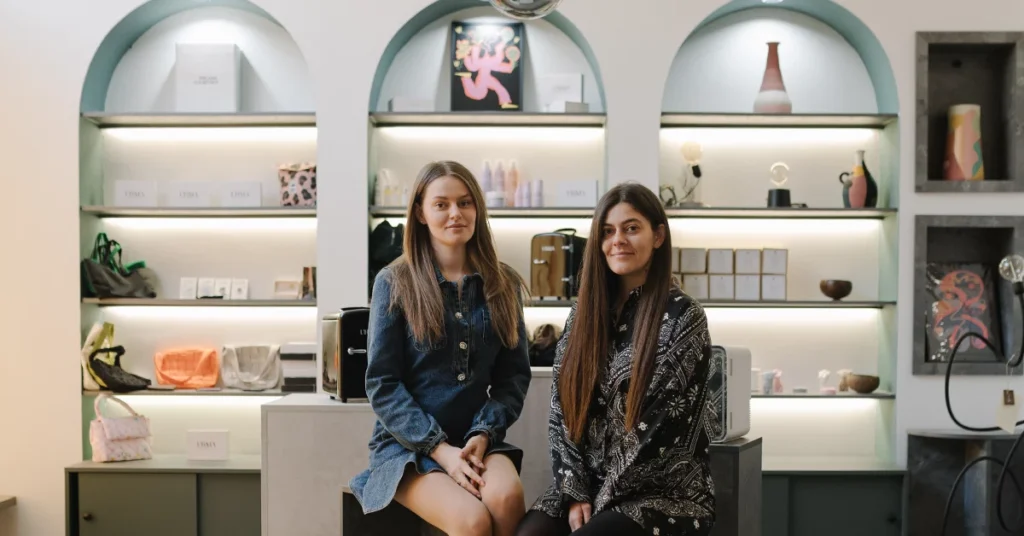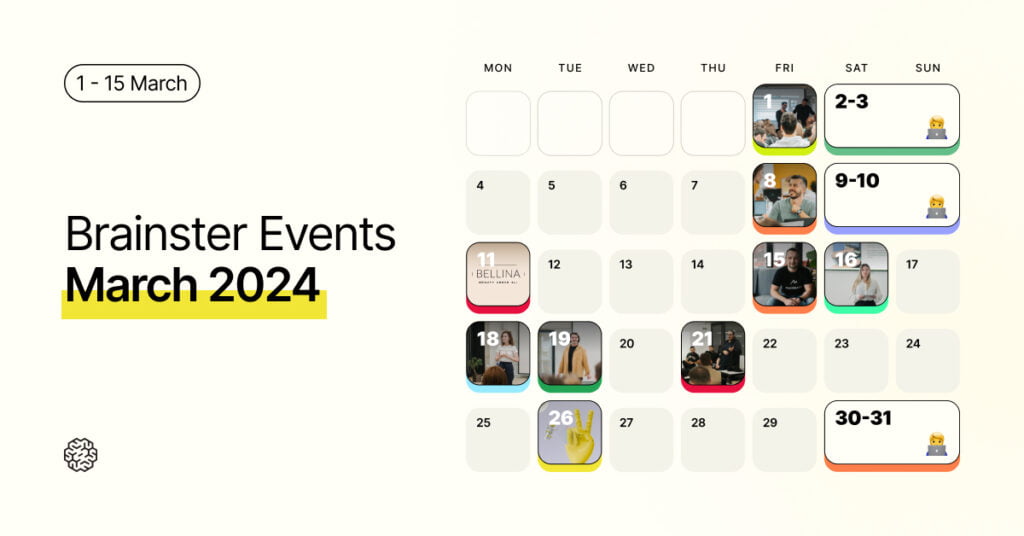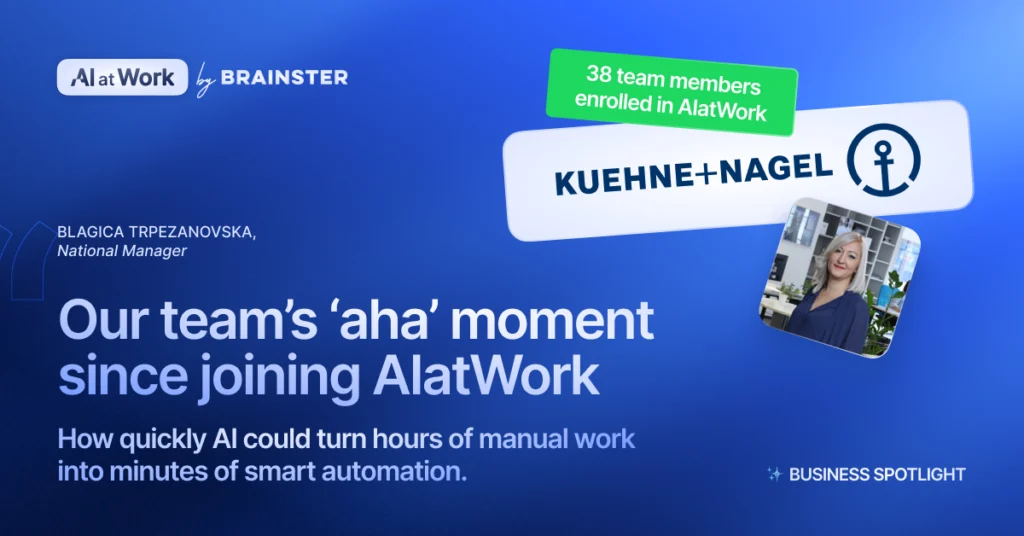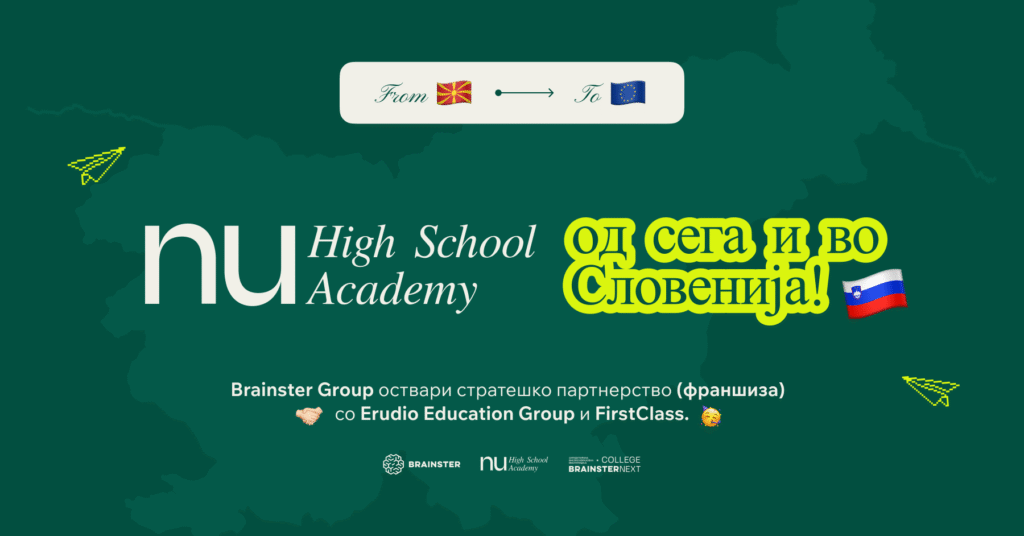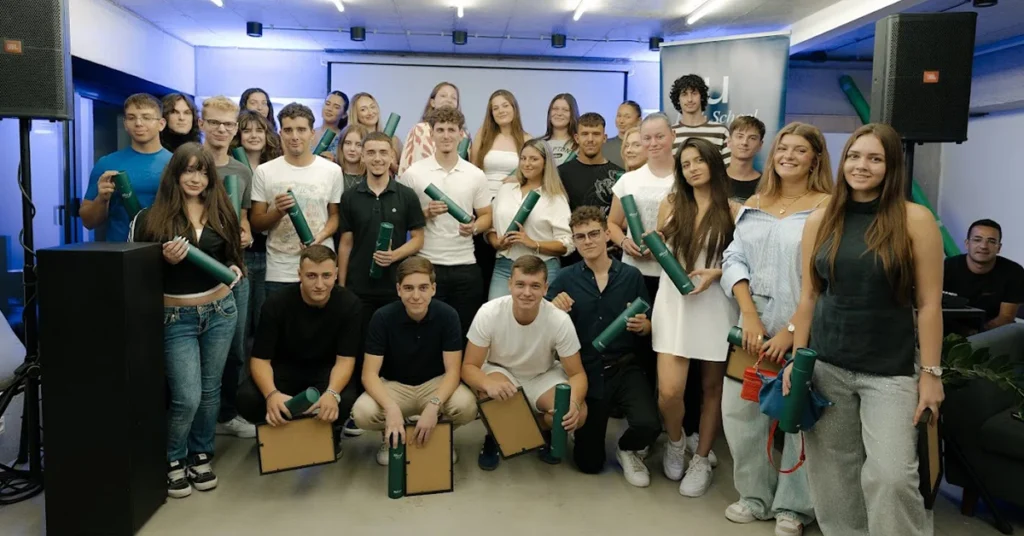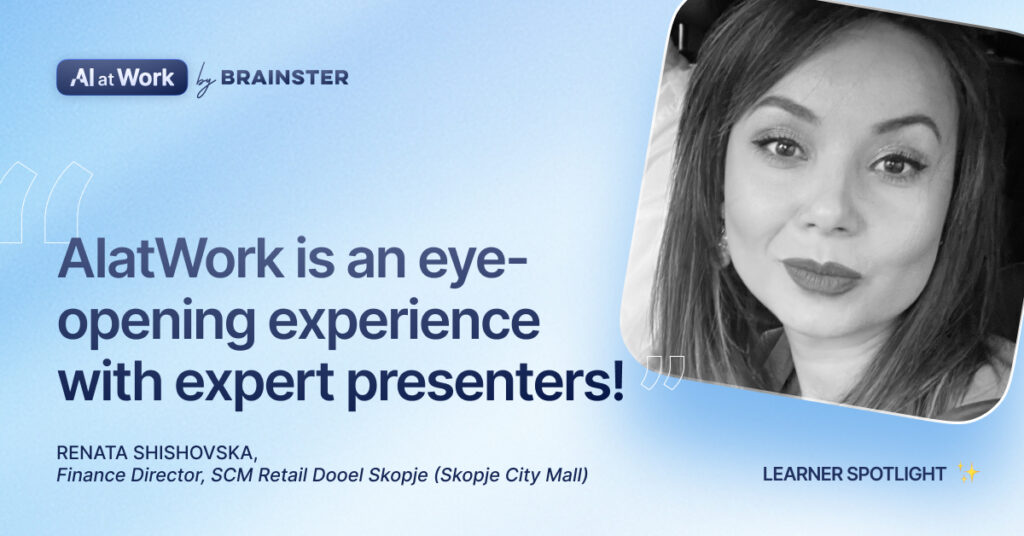Some people wait for the future to arrive. Others start building it.
For Krsto Gligorјadis, Graphic Designer at ARS Studio, Artificial Intelligence isn’t a distant trend — it’s the next creative medium.
Krsto joined AI@Work to explore how AI can expand the boundaries of art and design, not replace them. His story is a perfect reminder that creativity and technology aren’t opposites — they’re collaborators.
You too can do it! Register for the AIatWork Event on 3th of November!
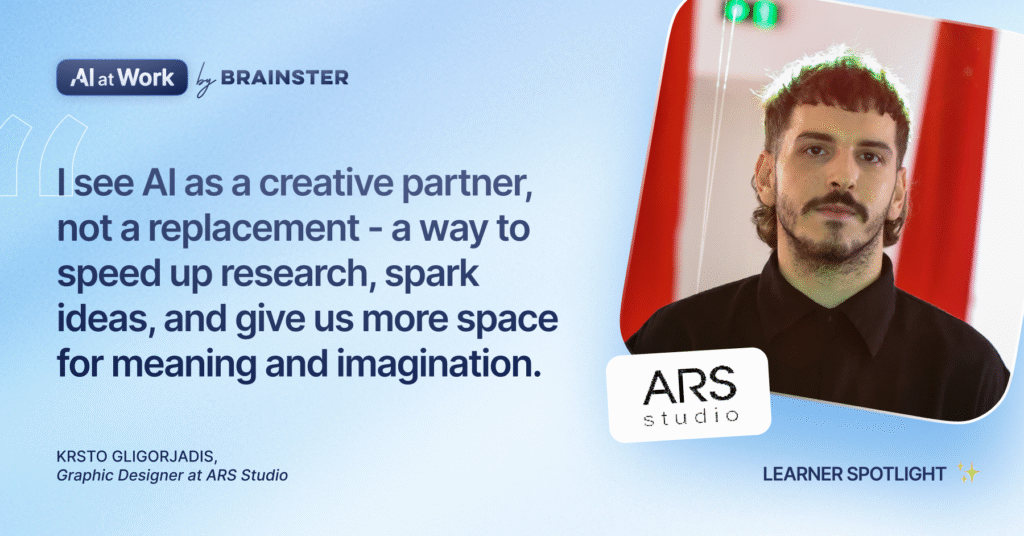
Why did you decide to start learning AI now?
Krsto:
“I chose to focus on Artificial Intelligence because I believe it is one of the most powerful tools for shaping the future. Now is the right moment to invest in this knowledge, as the technology is rapidly evolving and already transforming every industry.
My goal is to be among those who actively create the future of AI, rather than those who passively follow it.”
AI isn’t waiting for anyone — and Krsto understood that the best time to start is before it becomes the standard.
What’s the most useful or best way you’ve already applied AI?
Krsto:
“AI helps me access information and visual references in design and art that previously would have taken me days or even months of research.
This gives me more time for the creative process, experimentation, and idea development, instead of getting lost in lengthy preparation.”
What used to take hours of research is now a few creative prompts away — allowing him to spend less time searching and more time creating.
What’s something you’d love to do with AI in the future?
Krsto:
“I want to learn how to use AI for creativity and experimentation in design and art, and for analyzing visual data. First, I need to master the tools and skills, while AI helps me organize my time and tasks efficiently to focus on achieving my goals.”
For Krsto, AI is both a muse and a method — helping him think deeper, plan smarter, and unlock new visual possibilities.
What do most people get wrong about AI?
Krsto:
“The biggest misunderstanding about Artificial Intelligence is that it is conscious or capable of independent thought.
In reality, AI is an algorithmic tool that learns from data and identifies patterns. It doesn’t have awareness, emotions, or true creativity — it operates within the rules and data it has been given.”
He sees AI clearly — not as a replacement for human imagination, but as a mirror that reflects how far creativity can stretch when guided by human intent.
How would you describe your AI@Work experience in one short sentence?
Krsto:
“Early explorers of AI turn ideas into revolution.”
What’s the most surprising or funny AI moment you’ve had so far?
Krsto:
“I once asked AI to imagine a world where gods ran the office. Seeing Zeus call the meetings and Athena handle HR made me laugh and say ‘wow’ at how creative AI can be!”
Even in play, creativity meets discovery — because sometimes the best ideas start with a laugh.
Bonus Question – How do you see Artificial Intelligence shaping creativity in the future?
Krsto:
“I see AI as a powerful partner rather than a replacement — a tool that can speed up research, spark new ideas, and open doors to worlds we could never imagine alone.
It doesn’t take away the human touch; it gives us more space to focus on meaning and creativity.”
Krsto’s journey is a glimpse into the future of creative work — where art, design, and technology merge into something entirely new.
He’s not waiting for AI to settle down; he’s already using it to expand what creativity means.
Because, as he puts it best:
“Early explorers of AI turn ideas into revolution.”
